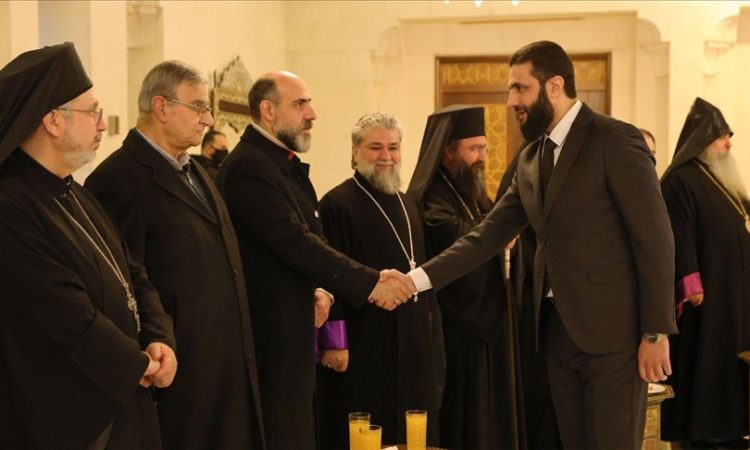Historic Encounter in Damascus: Catholic Bishops Meet New Syrian Islamist Leader Amid Post-Assad Transition

In a groundbreaking meeting symbolizing Syria’s fragile transition, Catholic bishops and Franciscan friars from the Custody of the Holy Land met Abu Mohammed al-Jolani, the leader of Hay’at Tahrir al-Sham (HTS), on December 31, 2024, at the presidential palace in Damascus. This encounter, following the December 8 fall of President Bashar al-Assad’s regime, marked a historic milestone after over five decades of Assad family rule.

The meeting, described as “a breach of hope” by Cardinal Mario Zenari, the apostolic nuncio to Syria, concluded with a joint statement by Patriarchs and Heads of Churches in Syria on December 29. The statement, a call for reconciliation and renewal, underscored the critical role of Christians in rebuilding Syria’s fractured social and economic fabric.
“At this historic moment, as Syria undergoes a new transition, we address the public with a message of love and hope,” the statement read, outlining the Church’s commitment to fostering national dialogue, economic recovery, and constitutional reform. It also appealed to the international community to lift the economic sanctions that have inflicted severe hardships on Syrian citizens.

A Turning Point for Syrian Christians
The post-Assad era has placed Syria’s Christian population at a crossroads. Once numbering 1.5 million in 2011, their community has dwindled to around 300,000 by 2022 due to war and persecution. The meeting between Church leaders and al-Jolani, however, provided a glimmer of hope. HTS assured respect for Christians, and discussions focused on their role in shaping a democratic constitution and fostering inclusivity.
Patriarch John X of Antioch had earlier hosted Dr. Abu Omar, an envoy of the new Syrian government, at his Damascus residence. The envoy conveyed al-Jolani’s greetings and emphasized the new administration’s intent to include Christians in rebuilding Syria’s future.
Yet, optimism is tempered by uncertainty. Cardinal Zenari, in an interview with Vatican News, expressed cautious hope while acknowledging the untested nature of HTS’s commitments. “Christians must seize this opportunity to participate in rebuilding Syria and promoting values such as human rights and freedom,” he stated.
A Fragile Peace
The scars of Syria’s conflict remain vivid. Christmas celebrations in 2024 reflected a mix of optimism and unease. In Sednaya, a large Christmas tree lighting drew crowds, symbolizing hope, while the burning of a Christmas tree in Suqaylabiyah—a Christian-majority town—highlighted persistent tensions.
In Maaloula, a historic Christian town, the return of Muslims expelled for collaborating with militant groups during the conflict has reignited local frictions. Christians, accused of aligning with the former regime, face pressure from some returning residents.
Regional dynamics further complicate the landscape. Ecumenical Patriarch Bartholomew met with Turkish President Recep Tayyip Erdoğan last week, urging protection for minorities in Syria. Pope Francis, in his Christmas address, prayed for Syrian Christians, calling for peace and reconciliation in the war-torn nation.
Challenges and Uncertainty
While HTS’s leadership promises a civil government respecting human rights, skepticism lingers. Cardinal Louis Raphaël Sako, head of the Chaldean Catholic Church in Iraq, drew parallels with Iraq’s post-ISIS recovery, where interreligious ties gradually improved, yet challenges persisted.
The Syrian Christian community remains vulnerable, with incidents like the Suqaylabiyah protests serving as stark reminders of their precarious position. As Syria transitions, the role of Christians in shaping its future hinges on whether the new Islamist leadership can translate promises into tangible protections and inclusivity.
For now, the December 31 meeting stands as a symbol of cautious optimism—a moment where dialogue between religious and political leaders offers a glimmer of hope for a nation seeking to heal its deep wounds.




